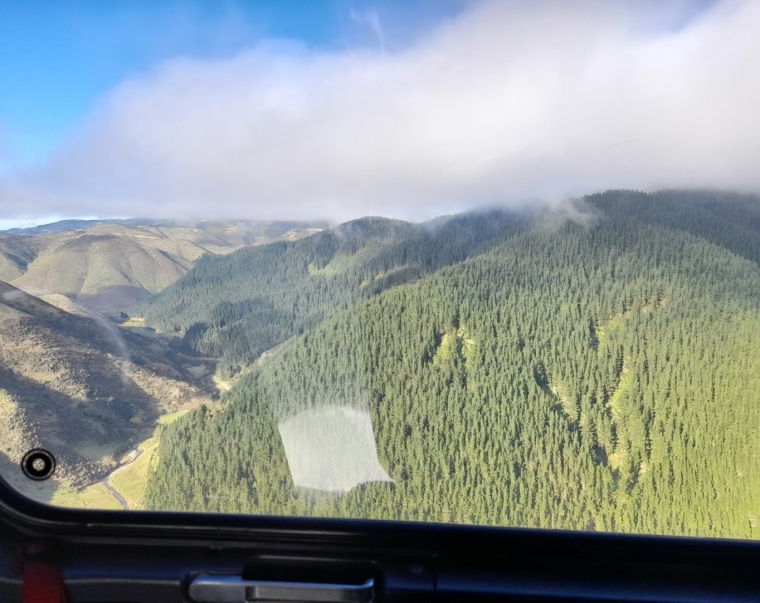
By Susan Harris*
Over the past two years there has been a stream of articles, commentary and even prime time television ads claiming that carbon forestry is taking over good farmland, reducing the production of food, and causing rural depopulation and rural school closures.
This seems odd when the total area of land in registered carbon forest is now 190,000 ha less than the 750,000 ha originally registered in 2008. A large drop in the price of carbon credits in early 2013 saw the removal of 350,000 ha from the New Zealand Emissions Trading Scheme (NZETS), leaving 400,000 ha remaining.
According to the Ministry for Primary Industries' latest figures, the total New Zealand registered carbon forest estate is 540,000 ha (MPI March 2023). The last 10 years has seen an addition of 140,000 ha to the NZETS at an average of 14,000 ha per year. If carbon forestry expansion continues at this rate, it will occupy all 7.8 million ha (Pearson 2020) of New Zealand grassland by the year 2579.
However, one might concede that this analysis is somewhat superficial. Haven’t conversion rates accelerated recently? The Orme & Associates report Land-use change from pastoral farming to large scale forestry Update August 2022 (draft version 3) contains some timely analysis of recent trends. Its summary shows that conversions of pastoral land to carbon forestry from 2020-2022 Q2 (pro-rata Q3 and Q4 as for Q1 and Q2) comes to around 13,124 ha/year, very close to MPI’s registered 14,000 ha/year.
Adding the 2% annual increase rate reported by Orme’s, carbon forestry could occupy all grassland by 2150. With MPI figures, conversion is done by 2148 (MyCarbon® projection 2023). Forestry OIO investments are excluded from this analysis, as they are solely for production forestry, not carbon forestry (LINZ 2023).
The Orme’s report also makes a critical observation that carbon forest investors are targeting marginal land for their purchases: “It is also interesting to see that the traditional “carbon” and “honey” companies still favour land with less productive classifications.” Ministry for the Environment records confirm that 88% of carbon forest is on hard country – Land Use Classes 6, 7 and 8. Thus the claim that carbon forestry is driving farmers from good farmland and reducing food production has little basis in fact. Rather, marginal country farmers now have options to make that marginal country pay.
The allegation that carbon forest is depopulating rural areas is also overstated. The Ministry of Education has informed us that they have never closed a rural school because carbon forestry establishment has caused rural depopulation. School closures, and openings, occur according to a group of socio-economic factors, not just one (pers comm MEd 2022).
The key conclusion from this assessment of verifiable facts is that owners of marginal hill country are now in the happy position of having multiple industries competing for their land. The carbon cash does not immediately disappear off-shore in our experience. It is used to pay down debt, invest in more livestock and other improvements for pastoral areas, and for the purchase of adjoining properties. Other investments include new ventures in tourism, boutique commercial forestry, native forest re-establishment, and climate change protection.
Remember there is still 190,000 ha less registered carbon forestry land in New Zealand than in 2008, so it is completely absurd to proclaim that carbon forestry is taking over good farming country and significantly reducing food production.
This is the complaint of unsuccessful competitors for marginal land use. They need to look to their knitting. Carbon forestry will shape into its right place in the rural environment over time as one of several different revenue streams for farmers. It will never march across the country and occupy every single square metre of New Zealand grassland by 2148.
*Susan Harris is Principal Scientist at GreenXperts Limited, a New Zealand-based sustainability consultancy involved in numerous carbon and land management projects. Susan was on the science team that helped the New Zealand Government create the New Zealand Emissions Trading Scheme. Susan worked on emission factors with other colleagues at that time.
11 Comments
Some sense to counter the BS from Beef & Lamb and the Feds.
Carbon forestry is a life line for those farms with a high proportion of steep unproductive hills - a large proportion of sheep & beef farms.
💥Hello!!!... Not any more. They should be fined for river/waterway pollution like other industry's are!!!!!💥
Interesting , didn't know about 2013.
My question on that is , will the current low price see an uptick of forest owners electing to remove forests now? I don't think anyone thinks the price will stay low in the longer term.
solardb. Short answer -no-. Ten years ago they were allowed to use European sourced carbon credits at around $2 per tomne which added about $1,000 per ha to the cost to convert half grown pine trees back to pasture, think of the big dairy conversions around Tokoroa and south Waikato. Even at todays lower prices it would add about $30,000 per ha to the cost on top of destumping, regrassing, fencing etc, making it uneconomic..
ahh , thanks.
I feel the comment about rural depopulation not being an issue is premature. Give it time and this depopulation will happen surely. A lot of forests are still only being planted, or in the pipeline to be planted. There are a lot of houses with adjoining small parcels of land that are being subdivided when the rest of the propety gets planted. These parcels of land with good dwellings may appeal in the short term, but in time I feel the isolated living may lose appeal. Most are not big enough to be economic, let alone when they become surrounded by mature pines. This will only add to the isolation, and be a haven for feral pests and the late night poachers and crime that follows. Sad but true
Cardon farming and the Climate Changing hoax (climates always change) are just another way for the financial sector to profit (privatizing Carbon is ridiculous), at the expense of the productive sector. More government control chocking productivity.
Are you two people fossil? Sometimes your comments show some intellectual rigour, and sometimes look like they were written by an 8 year old.
Many hillcountry farms have infrastructure, fences, yards and other buildings that need replacing or up grading. To achieve this using just farm income is near impossible.
Creating forest carbon sinks on a part of the farm to fund these upgrades, secures the productive capacity of these farms for the next 2 or 3 decades.
Then there is the use of carbon funds for fertilizer, track maintenance etc. And paying down debt. All these things add to the local economy.
I personally know off farmers and bee keepers who have stated that carbon has saved their business.
Carbon farming by existing land owners enhances local communities.
On our current trajectory, I can see the approaching collapse of land based meat production. Carbon farming will be the only game in town (or on the hill country farm).
Fossilized individuals that love their ideology more than reality, will ensure the very future they fight hard to deny.
100% right Hans
The big increase in registrations, @extra 2,000, is nearly all farmers. Just need to be aware the vast majority will not be permanent carbon forests. The permanent option is actually best suited to farmers with small, remote, steep areas that are totally unsuitable for commercial timber production - in native or exotic.
I have 100s of farmers with trees in the ETS and it has saved their farms and families. Without more profit on farms they will just fade away as the trend shows. Timber and Carbon are replacing wool as the necessary income stream besides meat for sheep for successful survival.

We welcome your comments below. If you are not already registered, please register to comment.
Remember we welcome robust, respectful and insightful debate. We don't welcome abusive or defamatory comments and will de-register those repeatedly making such comments. Our current comment policy is here.